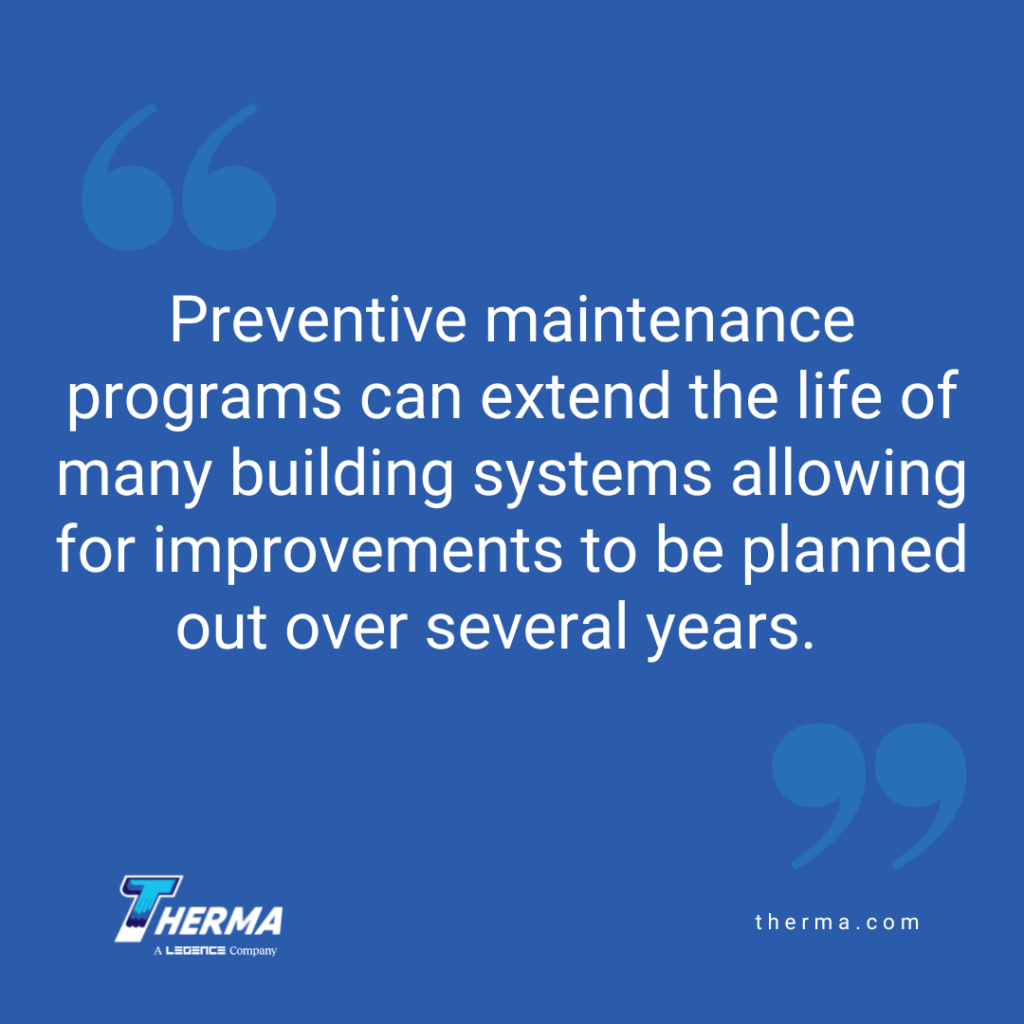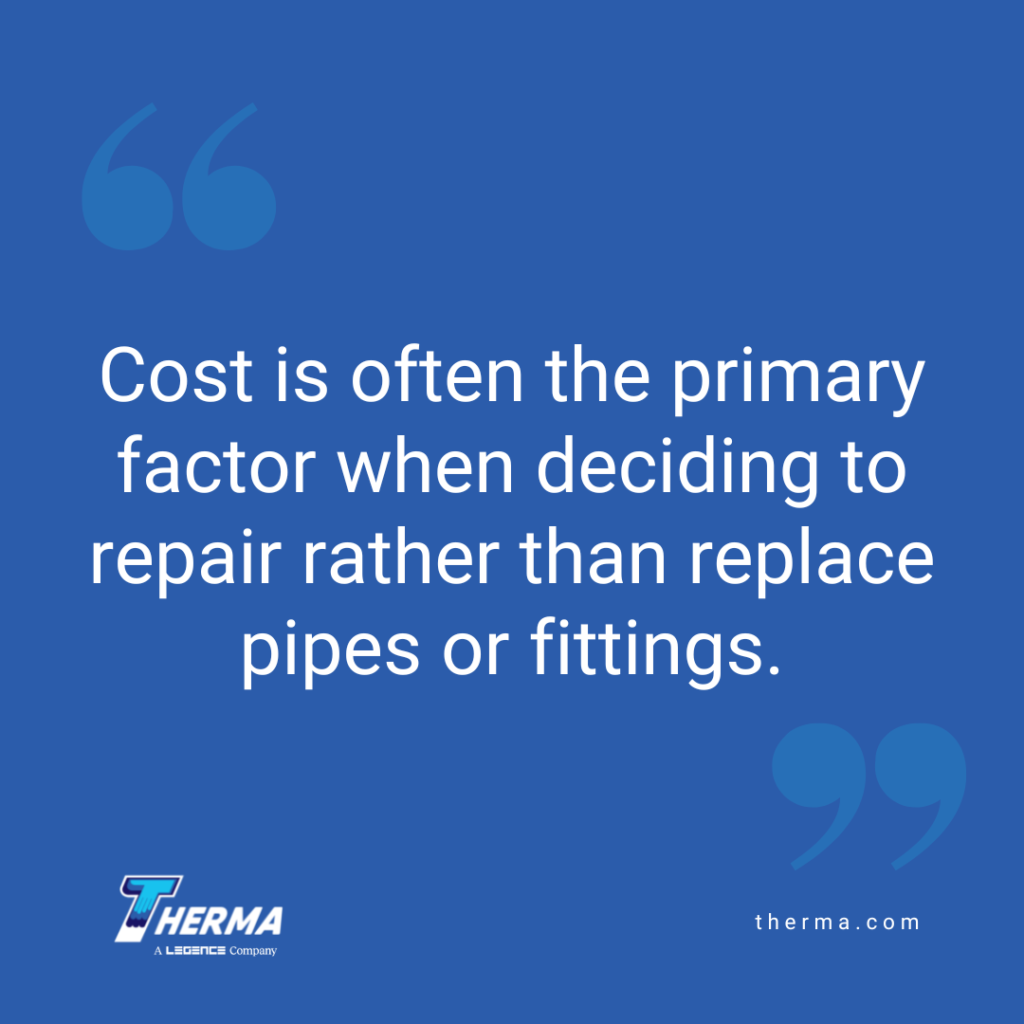by Patti Dees
Managers and owners inevitably face the decision to repair or replace plumbing that has seen better days. It seems, in passing, a simple decision – how much does it cost? However, the circumstances around each broken pipe or fixture are different and warrant forethought and planning. Weighing costs against factors such as code requirements or the likelihood of repeat failure can turn a cheap decision into a good one.
Cost is often the primary factor when deciding to repair rather than replace pipes or fittings. The simplest, though not always the best, approach is to estimate the cost of materials and labor for both situations and go with the cheapest. After all, repairing plumbing makes sense until replacement becomes cheaper than continued repairs. Unfortunately, this approach misses the full impact of some repairs on efficiency and lifecycle.
How Broken Is It
Pipes, fittings, and fixtures will deteriorate over time. Gaskets wear out, rust will eventually have its day, and enamel wears away. But then there are the more serious issues that come with repeated use. Decision makers should consider the following questions:
Is there a chance of catastrophic failure or code violation?
There is a reason it is called catastrophic failure. The cost and time required to deal with the aftermath of a repair that leads to outright failure are guaranteed to exceed the cost of replacement before the failure. Save some money and invest in a replacement.
Additionally, local or state building codes, as well as industry best practices, should be taken into account. If repair would fail to keep the system within regional codes, the only choice is to replace the pipe or fixture. Similarly, if the type of repair is not advised under industry standards, it is not worth the risk.

Will a repair create weak spots or alter flow characteristics?
Some repairs, especially if done poorly, will set up the system for additional problems down the road. Rough spots and debris within a pipe, for example, can create undesirable pressure points within the line or increase corrosion. This will shorten the life of the system and could even exacerbate issues downstream.
Does efficiency drop after the repair?
If a similar repair has been made before, either in the same area or in another part of the system, and staff noticed an efficiency drop afterward, a similar drop is possible. In this case, repairing plumbing can lead to an increase in operating costs.
Looking to the Future
Preventive maintenance programs can extend the life of many building systems allowing for improvements to be planned out over several years. They can also provide very useful information for maintenance planning. For facilities with these types of programs, additional questions to consider are:
Are there plans to replace part or all of the system in the future?
Depending on how far in the future a facility plans on upgrading all or part of the plumbing, managers may want to consider if repair is worth the investment. This is especially true for facilities seeking and maintaining sustainability certification. Serious consideration of how the repair will affect efficiency, sustainability measures, and indoor environmental quality will be important. For example, replacement with an upgraded fixture or using certain materials can earn points towards LEED certification.

Is historical maintenance data available?
Maintenance data collected over time are a great source of information. When possible, repair or replacement decisions should take into account known locations and frequency of prior repairs. Pipes, fittings, and fixtures within a section known to be rife with issues could benefit from replacement rather than repairs.
While tempting to resort to cost-only strategies that focus solely on labor and materials, deciding the merits of repairing over replacing parts of a plumbing system benefits from a broader and more long-range approach. Consider how the system affects other areas and systems within the building. Certification or management’s goals for upgrades should also factor into the solution. It may be that what starts out as a problem can be turned into an opportunity.
Patti draws on her background as a chemical engineer to share information with readers on technology, manufacturing, and construction.
Sources
FacilitiesNet – Plumbing: The Repair-Replace Decision – Facilities Management Insights
FacilitiesNet – Plumbing System Efficiency: Repair or Replace? – Facilities Management Insights
National Conference of State Legislatures – Water-Efficient Plumbing Fixtures
Corrosionpedia – 21 Types of Pipe Corrosion & Failure







